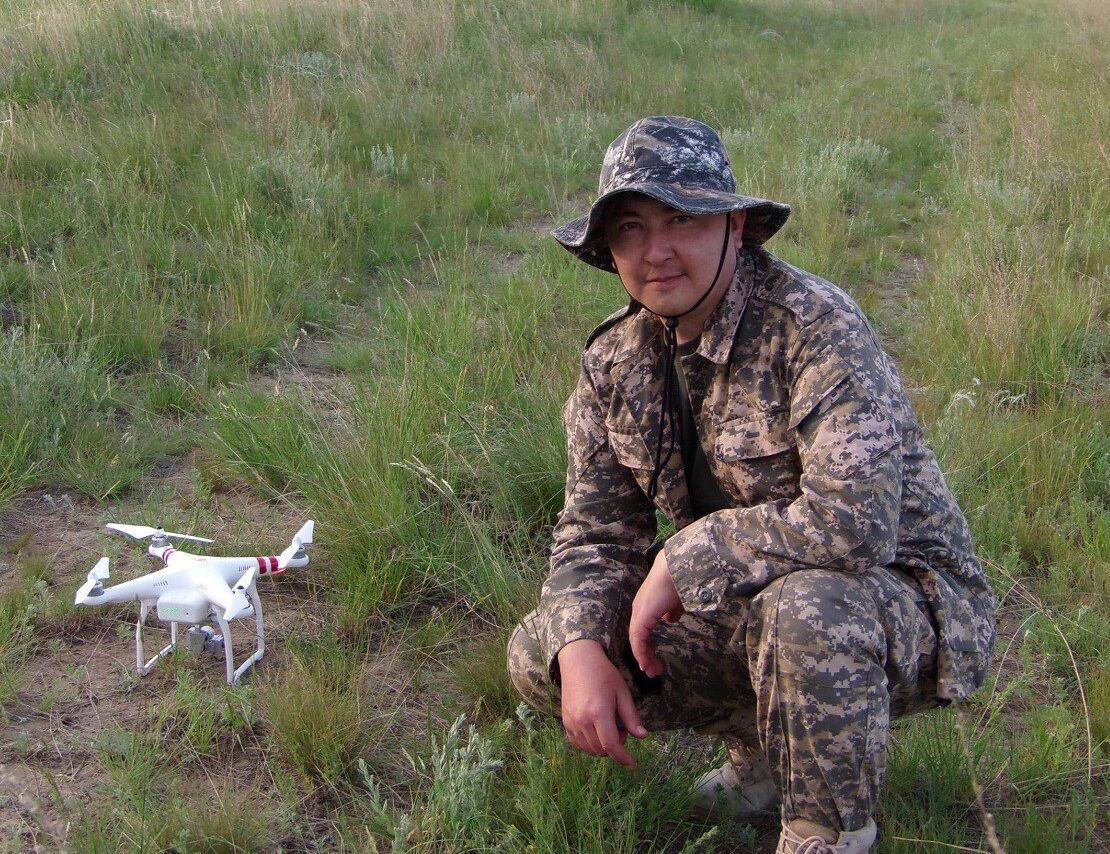ASTANA – The Turgai geoglyphs, a number of massive earth constructions arranged in geometric shapes the size of several football fields located in the Turgai Trough in northern Kazakhstan, once captured global attention and became one of the most sensational discoveries in the country’s history. The mysterious earthworks dating back approximately 8,000 years ago have seized scientists’ minds since they were found 16 years ago.
How the geoglyphs were discovered
Kazakh archaeology enthusiast Dmitriy Dey studied satellite photographs on Google Earth and found unusual geometric patterns built out of earth and clay in 2007. In the same year, he launched the Turgay Discovery project that focused on research on the Turgai geoglyphs.
Since 2007, Dey and a team of archaeologists and scientists have carried out nearly 80 expeditions.
“To date, 127 giant structures have been found and registered in the Turgay Discovery database. The majority of them lie within the Turgai Trough, and only a few of them are on the western and eastern parts of the trough,” said Dey in an interview for the story.

Large cross Ashtasti. Photo credit: NASA.
Ushtogay Square and Turgai Triquetra
Some of the extensive earthworks have been given names such as Ushtogay Square or Turgai Triquetra.
Ushtogai Square, represented by a geometric figure consisting of 101 mounds, was found first. It occupies an area of eight hectares, which is equal to nearly 11 football fields, while the length of the square’s side is 284 meters.
The square’s diagonals are formed by two rows of same-sized mounds, some of which were excavated. No artifacts were found under the mounds during the excavations.
“A large circular mound with autopsy signs was found near the square. According to locals, one man tried to find valuable belongings in it with the help of an excavator as early as the 1990s, but he did not succeed,” said Dey.
The Turgai Triquetra is a mound shaped like a three-radial swastika with a diameter of 94 meters. Seven embankments in the form of low mounds with different diameters from 15 to 33 meters are located to its right and several embankments in the form of dumbbells are to its left.
The triquetra covers an area of 512 meters with swastikas, lines, and embankments that differ from other geoglyphs in its construction and patterns. The mound looks like a natural hillock.

Ushtogay Square. Photo credit: NASA.
Three versions of the geoglyphs’ origin
Delivering his speech at TEDxAlmaty in 2016, Dey shared three main explanations for the rock massives’ origin that were put forward by several scientists.
According to a scenario from Vilnius University scientists, the geoglyphs served as border constructions that determined the tribes’ rights over the land.
Scientists of the Akhmet Baitursynov Kostanai Regional University-based archaeological laboratory hypothesized that the geoglyphs could be cult structures or sanctuaries used in the era of the early nomads.
Turgay Discovery’s researchers postulated that the geoglyphs were solar observatories or calendars built by hunters and gatherers during the Neolithic period. A little later, they became cult constructions. Tribes then used the geoglyphs and the sun to learn about the migration of animals and hunt them more effectively.
Current Studies

Dmitry Dey. Photo credit: Dey’s Facebook account.
According to Dey, the research conducted so far was not conclusive enough to determine the objects’ origin and function due to insufficient funding. However, scientists keep trying to gain support from the state.
Turgay Discovery project researchers and scientists working at the center for research, restoration and protection of historical and cultural heritage at Kostanai Region’s Culture Department will carry out archaeological research in the vicinity of eight Turgai geoglyphs located in the Turgai Trough in the summer of 2023.
Dey said that they will strive to discover ancient sites and settlements and test a working hypothesis that the earliest geoglyphs actually appeared approximately 9,000 years ago.
The status of the geoglyphs in Kazakhstan and the world
The two geoglyphs of Ushtogay Square and Turgai Triquetra are included in the list of sacred objects of national importance, while 72 other geoglyphs are also on the list of objects protected by the state.
The Turgai geoglyphs were first presented to the world at the 20th annual meeting of the European Archaeological Association in Istanbul in 2014 and were an overnight sensation.
Since then, numerous international magazines, including American Business Insider, Spanish El País and Magnet, French Numerama, and Greek Gazzetta.gr, wrote articles about the geoglyphs and referred to them in their lists of the world’s most amazing archaeological discoveries.
Dey also noted that a partnership with a team from the University of Pittsburgh brought the Turgay Discovery project up to a new level. Professor Ronald LaPorte contacted New York Times journalist Ralph Blumenthal, who wrote an article about the Turgai miracle and the NASA specialists who took new satellite images of the geoglyphs.


